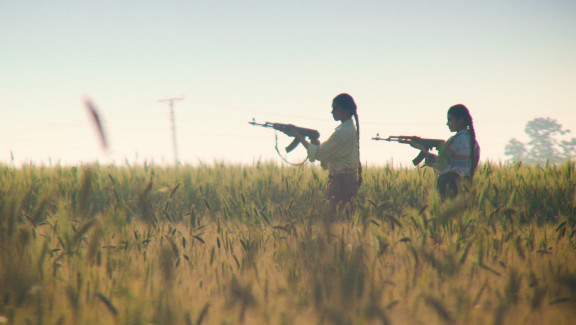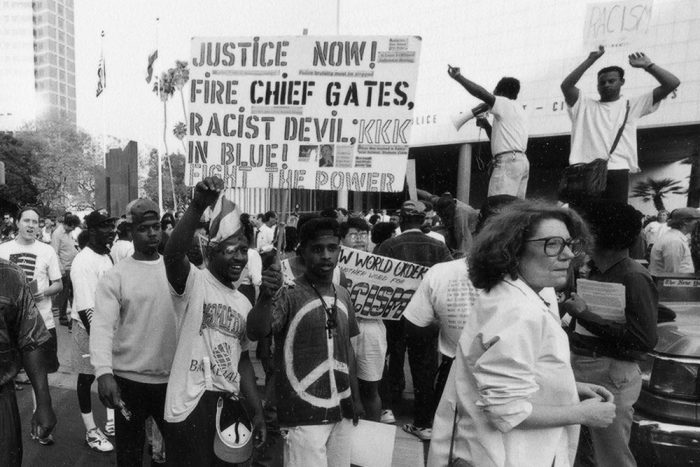 Lovingly hand-crafted by a dedicated team of over one-hundred artists, this groundbreaking animation is a tour de force of design and quite simply a marvel to behold. Each and every frame is painstakingly rendered with bold, dynamic brush strokes a la the great Master painter himself, and with an intensely lucid, dreamlike quality Loving Vincent seems a wholly befitting ode to the artist and his legacy.
Lovingly hand-crafted by a dedicated team of over one-hundred artists, this groundbreaking animation is a tour de force of design and quite simply a marvel to behold. Each and every frame is painstakingly rendered with bold, dynamic brush strokes a la the great Master painter himself, and with an intensely lucid, dreamlike quality Loving Vincent seems a wholly befitting ode to the artist and his legacy.
Unlike the best known of the Van Gogh biopics Lust For Life (1956), with maverick actor Kirk Douglas as the tortured artist, Loving Vincent is actually set twelve months after the painter’s death and follows a fairly conventional narrative thread of a detective story. Guided by Amand Roulin, erstwhile friend, and model to Van Gogh, the audience is escorted to several different key places frequented by the artist, from popular local haunts to riverside retreats.
Tasked with sending a letter from ‘one dead man to another’, from Vincent to his brother Theo, we see that Amand is initially reluctant, disinterested even at this prospect. As the investigation begins to intensify however both Amand and, indeed the audience, become swept up in the swirling, shrouded mystery surrounding the events leading up to the artist’s untimely demise.
With Loving Vincent, however, the narrative is always second fiddle to the main orchestral event; that being the film’s sumptuous, bravura visuals. Alternating between the richly kaleidoscopic dream world of the present and the perversely photo-realist, monochrome realm of past memories, Loving Vincent weaves a somewhat strained tale of deceit and murder that is almost smothered by its own sheer beauty.
 This loose, impressionist aesthetic is truly a fitting homage to the great Master himself, yet despite it uniquely being the first feature to be entirely hand-painted, arguably the cinematic genius Akira Kurosawa was there first at least in spirit. His film Dreams (1990) is made up of eight separate vignettes with one of them entitled ‘Crows’, which follows a young art student’s metaphysical meanderings through the wheat fields and winding country paths of Van Gogh’s celebrated canvases. On finding the artist painting alone amongst the cornflowers, the student begins to engage Van Gogh in conversation, and as with Loving Vincent, there is this opening up of a dialogue between the dead and the living, and between artist and audience.
This loose, impressionist aesthetic is truly a fitting homage to the great Master himself, yet despite it uniquely being the first feature to be entirely hand-painted, arguably the cinematic genius Akira Kurosawa was there first at least in spirit. His film Dreams (1990) is made up of eight separate vignettes with one of them entitled ‘Crows’, which follows a young art student’s metaphysical meanderings through the wheat fields and winding country paths of Van Gogh’s celebrated canvases. On finding the artist painting alone amongst the cornflowers, the student begins to engage Van Gogh in conversation, and as with Loving Vincent, there is this opening up of a dialogue between the dead and the living, and between artist and audience.
Dubbed ‘the father of modern art’, Van Gogh was exceptional in his ability to vividly and powerfully capture feelings of existentialist isolation and anguish and was a huge influence on many an artist who came after him. In what is perhaps the film’s best-realised scene, Vincent leans over a wash basin, staring back at his own twisted and tortured visage in the reflection of the water, his face fractured by the water’s surface.
It is a stunningly beautiful scene and one which seems to come closest to capturing the true spirit of the artist’s own unique, unparalleled vision.
- Benjamin’s Top Ten Films Of 2017 - January 5, 2018
- Loving Vincent - December 4, 2017
- Donkey: Journey to the West – Donkeyote Review - July 10, 2017




